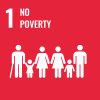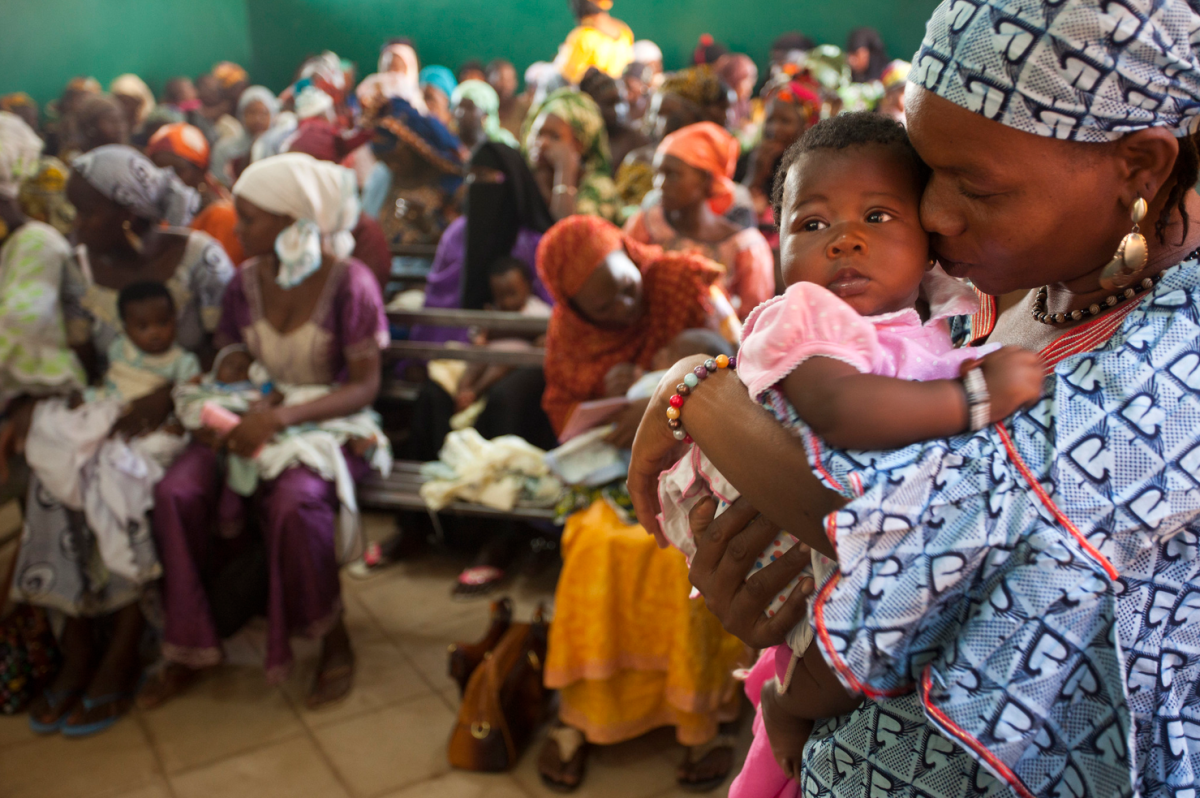
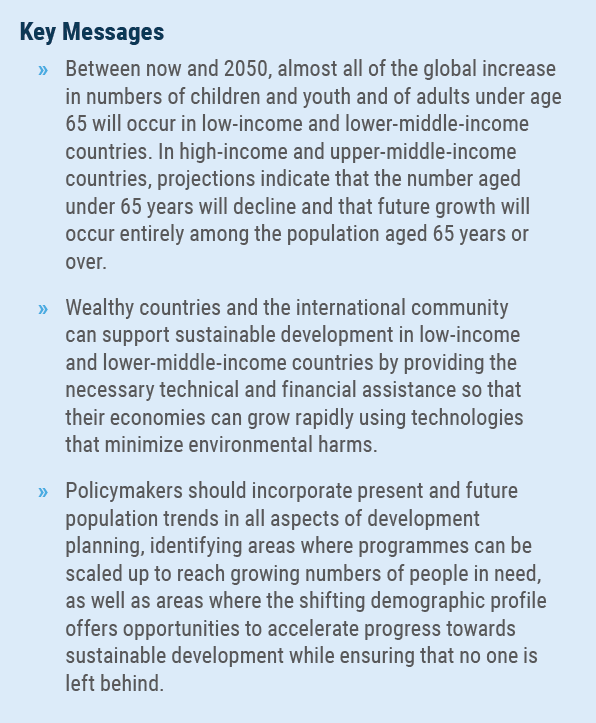 Global population growth continues but is slowing down
Global population growth continues but is slowing down
On 15 November 2022, the world’s population is projected to reach 8 billion people, having grown by 1 billion since 2010. This is a remarkable milestone given that the human population numbered under 1 billion for millennia until around 1800, and that it took more than 100 years to grow from 1 to 2 billion. By comparison, the increase of the world’s population over the last century has been quite rapid. Despite a gradual slowing in the pace of growth, the global population is projected to surpass 9 billion around 2037 and 10 billion around 2058 (figure 1). This rapid growth of the human population is a testament to achievements in public health and medicine, such as improvements in sanitation and disease control, better access to clean drinking water, and the development of vaccines, antibacterial drugs and other effective medical therapies. Together with improved nutrition and rising standards of living, such achievements lowered the risk of dying, especially among children, and generated an unprecedented growth of populations throughout the world. At the same time, rapid population growth poses challenges to progress in social and economic development by necessitating an ever-increasing investment of resources to meet the needs of growing numbers of people. In addition, continued population growth gives heightened urgency to efforts to ensure economic development while also protecting and preserving the environment. Understanding and planning for future demographic changes is essential to achieving continued progress towards the Sustainable Development Goals (SDGs) while ensuring that no one is left behind.
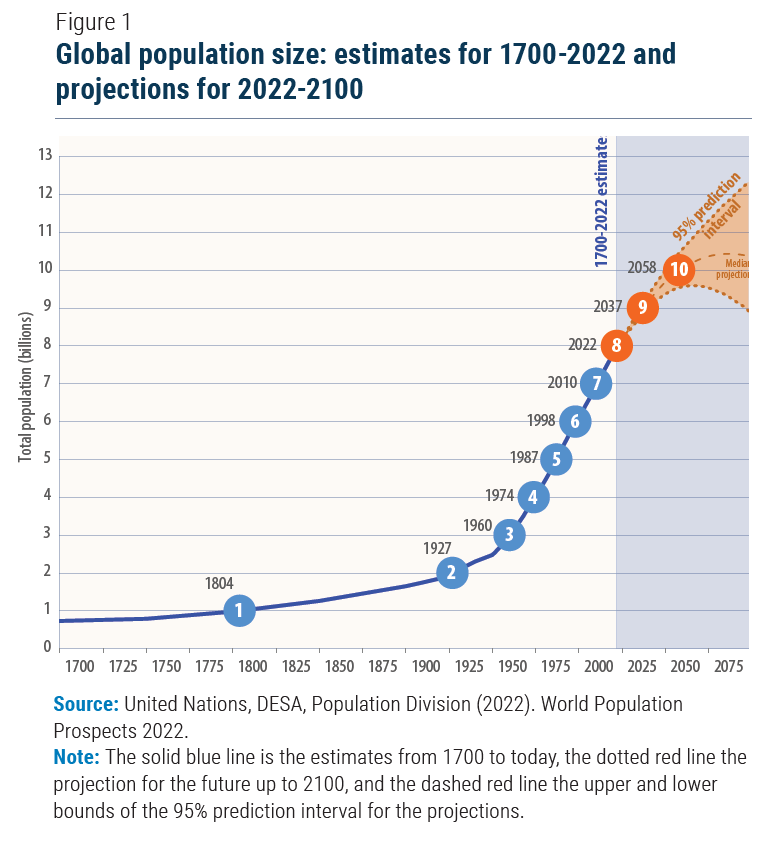 Population growth is increasingly concentrated in the poorest countries
Population growth is increasingly concentrated in the poorest countries
The unprecedented growth of the global population is the result of two trends: on the one hand, the gradual increase in average human longevity due to widespread improvements in public health, nutrition, personal hygiene and medicine, and on the other hand, the persistence of high levels of fertility in many countries. To be sure, the global fertility rate—the average number of births per woman over a lifetime—has been falling as countries progress through a demographic transition that has unfolded around the world over the past two centuries. The variable timing and pace of fertility decline across countries and regions, coupled with continuing reductions in mortality, has meant that births continue to outnumber deaths at the global level and thus that world population continues to grow. In addition to driving rapid population growth, sustained high levels of fertility in some regions have resulted in a relatively youthful global age distribution. From a demographic perspective, a youthful age structure creates momentum and ensures that growth will continue even if average fertility drops immediately to much lower levels. Due in part to this momentum of growth, a decline in the world’s population is not expected for another half century, with the exact date depending largely on the future pace of fertility decline in today’s high-fertility countries. Because countries with high levels of fertility tend to be those with relatively low incomes per capita, over time the growth of the world’s population has become increasingly concentrated among the world’s poorest countries, most of which are in sub-Saharan Africa (figure 2). As the global population grew from 7 to 8 billion, around 70 per cent of the added population was in low-income and lower-middle-income countries. When the next billion is added between 2022 and 2037, these two groups of countries are expected to account for more than 90 per cent of global growth. 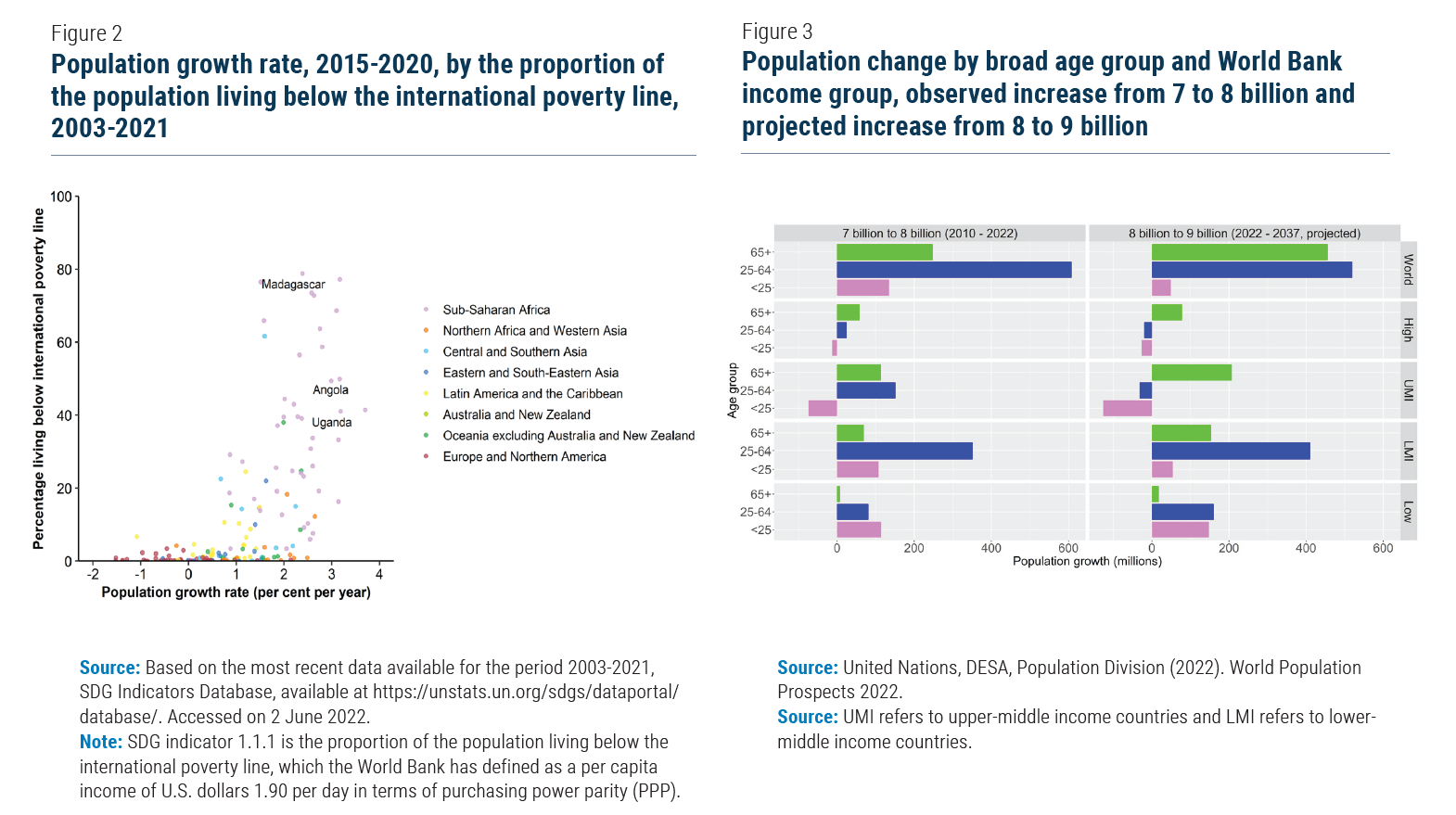 The variable timing and pace of fertility decline across countries and regions has produced distinct age profiles of population change by income group (figure 3). As the world grew from 7 to 8 billion, most of the growth in low-income countries was comprised of children and youth under age 25. Despite projected declines in fertility, this age group will account for nearly half of the increase projected for this group of countries as the world grows from 8 to 9 billion. Among lower-middle-income countries, growth in the number of adults between ages 25 and 64 years dominates population increase both in the recent past and in projections for the near future. Around two-thirds of the growth in these countries is accounted for by increases in this age group. Notably, as the world’s population grows from 8 to 9 billion, almost all of the expected increase in numbers of children and youth and of adults below age 65 will occur in low-income and lower-middle-income countries. By contrast, in high-income and upper-middle-income countries, population projections by the United Nations suggest that the number of persons under age 65 will decline in the coming years and that growth will occur only in the population aged 65 years or over.
The variable timing and pace of fertility decline across countries and regions has produced distinct age profiles of population change by income group (figure 3). As the world grew from 7 to 8 billion, most of the growth in low-income countries was comprised of children and youth under age 25. Despite projected declines in fertility, this age group will account for nearly half of the increase projected for this group of countries as the world grows from 8 to 9 billion. Among lower-middle-income countries, growth in the number of adults between ages 25 and 64 years dominates population increase both in the recent past and in projections for the near future. Around two-thirds of the growth in these countries is accounted for by increases in this age group. Notably, as the world’s population grows from 8 to 9 billion, almost all of the expected increase in numbers of children and youth and of adults below age 65 will occur in low-income and lower-middle-income countries. By contrast, in high-income and upper-middle-income countries, population projections by the United Nations suggest that the number of persons under age 65 will decline in the coming years and that growth will occur only in the population aged 65 years or over.
Rapid growth is both cause and symptom of slow progress in development
For low-income and lower-middle-income countries, the continuing high levels of fertility that drive rapid population growth are both a symptom and a cause of slow progress in development. Rapid growth poses various challenges to the achievement of SDGs related to schooling, public health, housing, water and sanitation, employment and poverty. Rapidly growing numbers of children and youth in low-income countries can hamper progress towards ensuring inclusive and equitable education and healthy lives and well-being for all. Yet returns from investing in the human capital of children and young people are manifold, generating virtuous cycles that can lift individuals, families and societies out of poverty and reduce inequality. A significant increase in public expenditures will be required to meet the needs of the growing population of children and youth in low-income countries. Achieving the Sustainable Development Goals, particularly those related to health, education and gender equality, can contribute to slowing global population growth. High fertility is often linked to a lack of choice and empowerment among women and girls. Expanded opportunities for education and employment contribute to the decline of fertility by changing incentives and intentions around marriage and childbearing. Universal access to sexual and reproductive health care, including family planning, and the protection of reproductive rights enable individuals and couples to better realize their fertility intentions, reducing the number of unintended pregnancies and often leading to lower levels of fertility. Yet, the gap between fertility intentions and actual use of effective contraception is large in low-income countries, where only slightly more than half of all women who want to avoid pregnancy are using a modern contraceptive method. In these countries, rapid growth in the population of women of reproductive age (15 to 49 years) will require a significant expansion in the provision of sexual and reproductive health care. If countries where the population has been growing rapidly achieve a substantial and sustained decline in the fertility level, smaller cohorts of dependent children and youth will result in an increased concentration of the population in the working ages, creating a window of opportunity for an accelerated growth in income per capita. In lower-middle-income countries, for example, population growth is heavily concentrated in the age range from 25 to 64 years (figure 3). However, reaping the potential benefits of this “demographic dividend” will also require substantial improvements in education, health and gender equality and in access to productive employment and decent work for all. When population growth slows due to reduced fertility, the age distribution of the population shifts towards older ages, leading at first to a swelling in the working-age population and eventually to an increased concentration at older ages. As a result, the global increase in the population above 65 years is expected to be greater during the transition from 8 to 9 billion compared to the one from 7 to 8 billion (figure 3). In this context, there is an urgent need for policies and programmes to protect and promote the well-being of growing numbers of older persons.
What does population growth mean for sustainability?
Coupled with unsustainable patterns of consumption and production, the rapid growth of the human population has contributed to various forms of environmental degradation, including global warming, climate change, deforestation and loss of biodiversity. Global wildlife populations declined by two thirds between 1970 and 2020, while the human population more than doubled. Since 1990, an estimated 420 million hectares of forest have been lost through conversion to other land uses, and the area of primary forest worldwide has decreased by over 80 million hectares. Environmental damage often arises from economic processes that lead to higher standards of living, especially when the full social and environmental costs, such as damage from pollution and habitat destruction, are not factored into market prices. Although population growth magnifies the environmental impact of harmful economic processes, rising per capita incomes have been a more important driver of increased consumption in recent decades.5 Notably, the countries with the highest per capita consumption of material resources and the greatest emissions of greenhouse gases (GHGs) tend to be those where income per capita is higher and population growth is slow or even negative, not those where incomes are lower and the population is growing rapidly (figure 4). 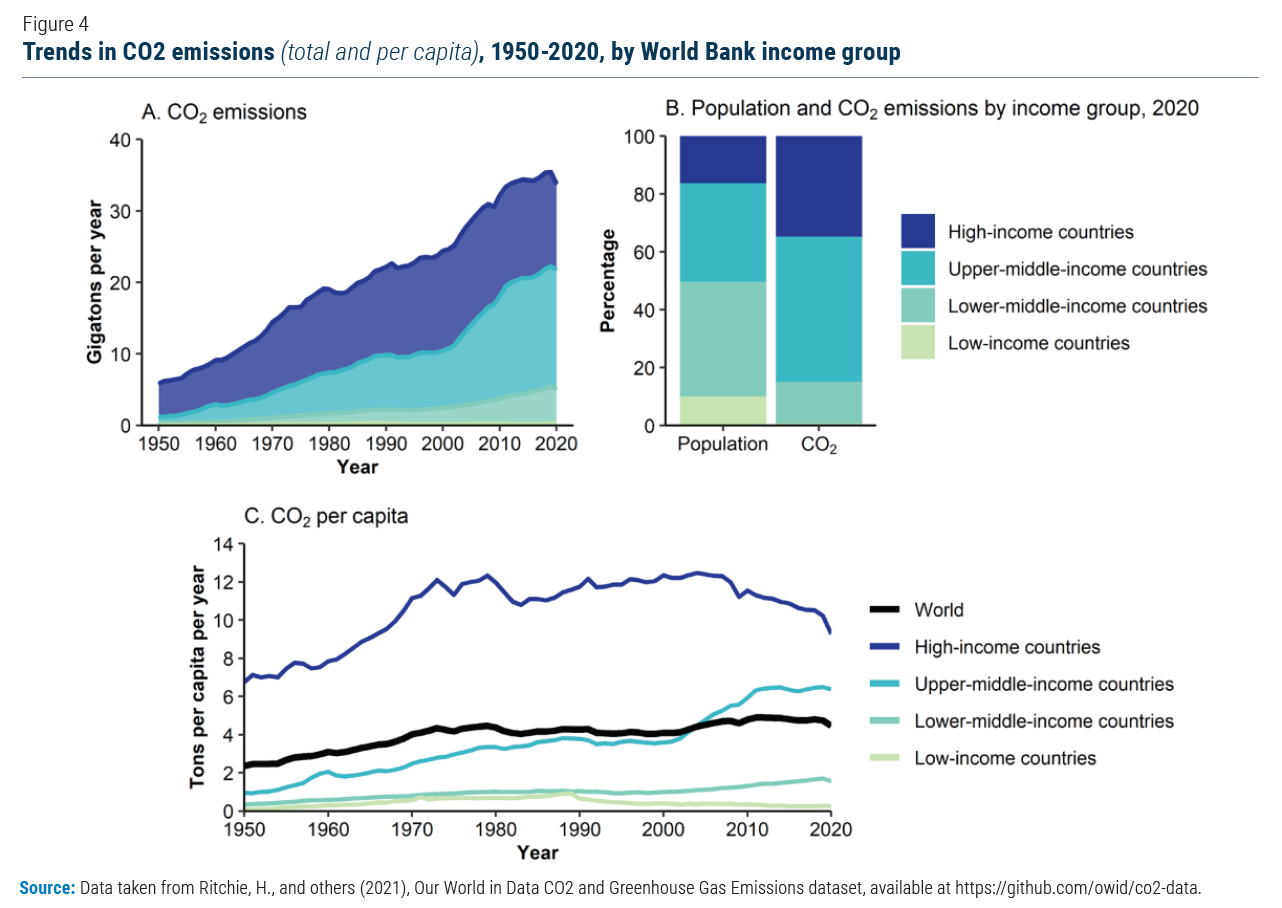 Upper-middle-income countries have experienced rapid economic growth in recent decades. As income per capita has risen, these countries have witnessed a pronounced increase in the size of their material footprint. Meanwhile, low-income and lower-middle-income countries have a much smaller material footprint and have so far contributed little to climate change. Nevertheless, their energy consumption will need to increase substantially if they are to develop economically and achieve the Goals and targets of the 2030 Agenda for Sustainable Development. To mitigate the potential climate impacts of their future economic growth, low-income and lower-middle-income countries will need substantial financial and technical assistance to ensure access to clean and sustainable energy sources that can fuel economic growth while minimizing environmental damage. Patterns of global food production and consumption must also change to address the climate crisis. Over the past 50 years, the increase in global food production has outpaced population growth. This rapid expansion of agricultural production was a profound achievement, but one that has come with high environmental costs. The global food system, in particular animal-based products, is responsible for 20-30% of total greenhouse gas (GHG) emissions, including emissions from agriculture and from food storage, transport, packaging, processing and distribution. Smart policies are needed throughout the food system to move towards sustainable practices that preserve biodiversity and that help to mitigate climate change and adapt to its environmental and other impacts, while ensuring access to safe, sufficient, affordable and nutritious food and the enjoyment of a diversified, balanced and healthy diet for all. Because of the momentum of population growth, efforts to limit human numbers can do relatively little to mitigate the threat posed by climate change between now and mid-century, compared with the potential impact of changes in patterns of economic production and consumption. Nevertheless, the cumulative effects of lower fertility and slower population growth, if maintained over several decades, could help to mitigate the further accumulation of environmental damage, especially in the second half of the current century. Meeting the objectives of the Paris Agreement for limiting the rise in global temperature while achieving the Goals and targets of the 2030 Agenda for Sustainable Development will require a rapid decoupling of economic activity from the current over-reliance on fossil-fuel energy, as well as greater resource efficiency. High-income and upper-middle-income countries should lead by example and reduce their GHG emissions and transition to more resource-efficient patterns of consumption and production.
Upper-middle-income countries have experienced rapid economic growth in recent decades. As income per capita has risen, these countries have witnessed a pronounced increase in the size of their material footprint. Meanwhile, low-income and lower-middle-income countries have a much smaller material footprint and have so far contributed little to climate change. Nevertheless, their energy consumption will need to increase substantially if they are to develop economically and achieve the Goals and targets of the 2030 Agenda for Sustainable Development. To mitigate the potential climate impacts of their future economic growth, low-income and lower-middle-income countries will need substantial financial and technical assistance to ensure access to clean and sustainable energy sources that can fuel economic growth while minimizing environmental damage. Patterns of global food production and consumption must also change to address the climate crisis. Over the past 50 years, the increase in global food production has outpaced population growth. This rapid expansion of agricultural production was a profound achievement, but one that has come with high environmental costs. The global food system, in particular animal-based products, is responsible for 20-30% of total greenhouse gas (GHG) emissions, including emissions from agriculture and from food storage, transport, packaging, processing and distribution. Smart policies are needed throughout the food system to move towards sustainable practices that preserve biodiversity and that help to mitigate climate change and adapt to its environmental and other impacts, while ensuring access to safe, sufficient, affordable and nutritious food and the enjoyment of a diversified, balanced and healthy diet for all. Because of the momentum of population growth, efforts to limit human numbers can do relatively little to mitigate the threat posed by climate change between now and mid-century, compared with the potential impact of changes in patterns of economic production and consumption. Nevertheless, the cumulative effects of lower fertility and slower population growth, if maintained over several decades, could help to mitigate the further accumulation of environmental damage, especially in the second half of the current century. Meeting the objectives of the Paris Agreement for limiting the rise in global temperature while achieving the Goals and targets of the 2030 Agenda for Sustainable Development will require a rapid decoupling of economic activity from the current over-reliance on fossil-fuel energy, as well as greater resource efficiency. High-income and upper-middle-income countries should lead by example and reduce their GHG emissions and transition to more resource-efficient patterns of consumption and production.
Planning for the next billion can benefit from demographic foresight
Changes in population size and composition are largely foreseeable, having been shaped by demographic processes that unfold over decades. Understanding these changes requires the systematic collection and analysis of data from population censuses and civil registration systems. Informed planning for population changes can help to accelerate progress towards achieving the Sustainable Development Goals, in particular those related to poverty, health, education, gender equality and the environment. Policymakers should incorporate present and future population trends in all aspects of development planning, identifying areas where programmes can be scaled up to reach growing numbers of people in need, as well as areas where the shifting demographic profile offers opportunities to accelerate progress towards sustainable development while ensuring that no one is left behind.
 Welcome to the United Nations
Welcome to the United Nations
